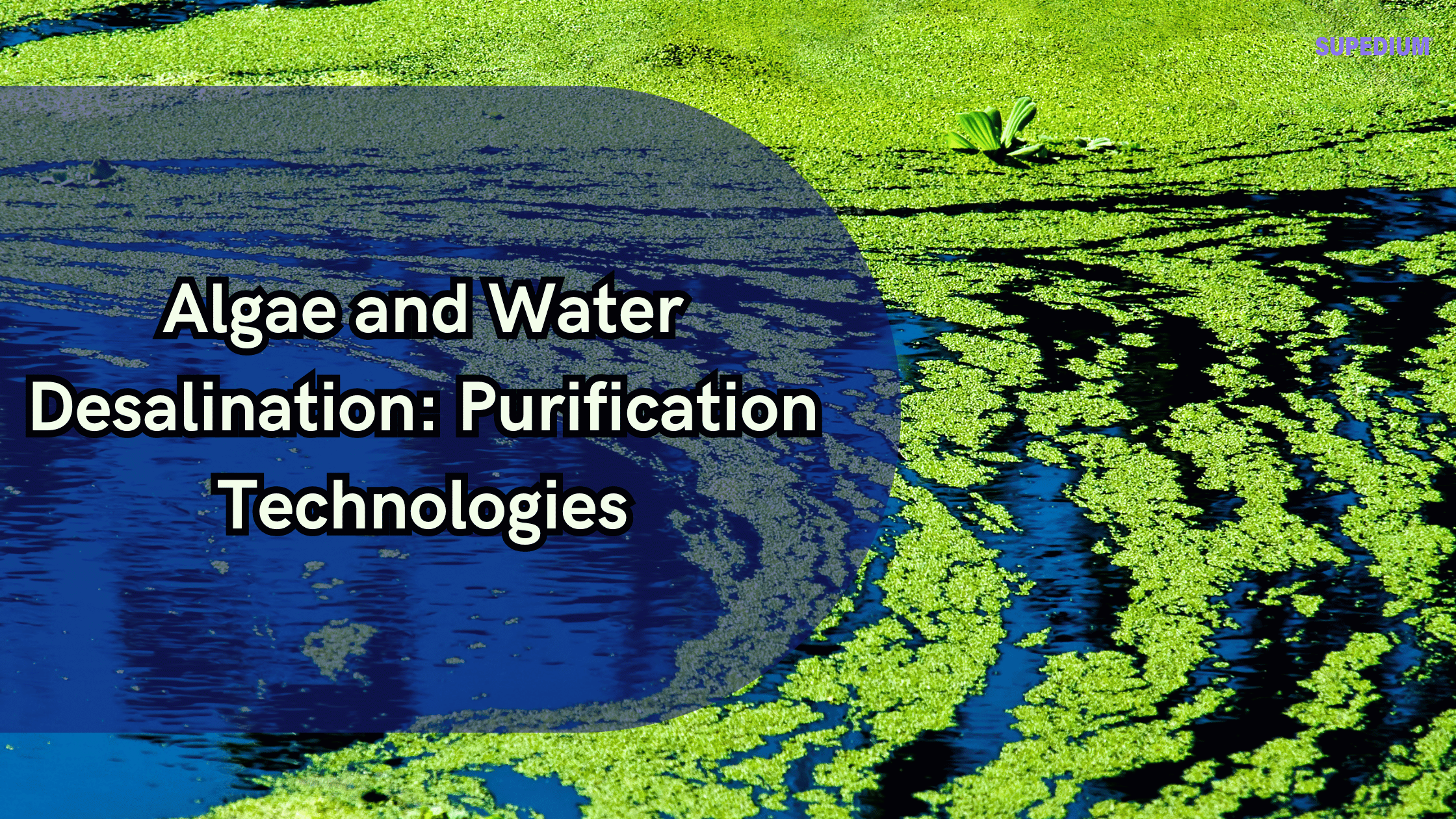Table of Contents
- 1 I. Introduction
- 2 II. Background on Desalination
- 3 III. Algae: Overview and Characteristics
- 4 IV. Algal-Based Purification Technologies
- 5 V. Algae in Desalination Processes
- 6 VI. Advantages of Algae in Water Purification
- 7 VII. Challenges and Limitations
- 8 VIII. Case Studies and Current Applications
- 9 IX. Future Directions and Innovations
- 10 X. Conclusion
![]()
I. Introduction
Desalination, the process of removing salt and other impurities from seawater or brackish water, has emerged as a crucial technology in addressing global water scarcity. With freshwater resources becoming increasingly limited, innovative purification technologies are necessary to meet the demands of growing populations and industries. One promising avenue of research focuses on the utilization of algae in water treatment processes. This article explores the relationship between algae and desalination, examining various purification technologies that harness the unique capabilities of these organisms.
II. Background on Desalination
A. Traditional Desalination Methods
Desalination has traditionally relied on methods such as reverse osmosis and thermal distillation. Reverse osmosis uses semi-permeable membranes to separate salt and impurities from water, while thermal distillation involves boiling water to produce steam, which is then condensed back into liquid form. Despite their effectiveness, these methods are energy-intensive and often lead to environmental concerns, particularly related to the disposal of concentrated brine.
B. Environmental Impacts of Conventional Desalination
The environmental impacts of conventional desalination technologies are significant. High energy consumption contributes to greenhouse gas emissions, while the disposal of brine can harm marine ecosystems. This has prompted a search for more sustainable alternatives that can provide clean water with minimal ecological footprint.
C. Need for Sustainable Alternatives
As the demand for fresh water continues to rise, there is an urgent need for innovative and sustainable desalination solutions. Algae-based technologies represent a promising approach, combining purification capabilities with environmental benefits.
III. Algae: Overview and Characteristics
A. Definition and Types of Algae
Algae are simple, photosynthetic organisms found in various aquatic environments. They can be broadly categorized into microalgae and macroalgae. Microalgae, often single-celled, are rich in proteins and lipids, while macroalgae, commonly known as seaweeds, are multicellular and vary in size and form.
B. Biological and Ecological Significance
Algae play vital roles in aquatic ecosystems, serving as primary producers that convert sunlight into energy. They contribute to oxygen production and serve as a food source for a variety of organisms, thus forming the foundation of many aquatic food webs.
C. Nutritional and Biotechnological Applications
Beyond their ecological roles, algae have gained attention for their nutritional value and biotechnological applications. They are rich in essential nutrients, making them valuable in food and health supplements. Additionally, algae can be used in the production of biofuels, fertilizers, and pharmaceuticals.
IV. Algal-Based Purification Technologies
A. Mechanisms of Water Purification by Algae
Algae have several mechanisms through which they can purify water. They effectively uptake nutrients like nitrogen and phosphorus, which are often pollutants in water bodies. Algae can also absorb heavy metals and reduce pathogens, thereby improving water quality.
B. Photosynthetic Process and Oxygen Production
Through photosynthesis, algae convert carbon dioxide into oxygen, contributing to improved water conditions. This process not only enhances the quality of water but also promotes a healthier aquatic environment.
C. Biofilm Formation and Its Role in Purification
Algae can form biofilms on surfaces, which play a significant role in water treatment. These biofilms provide a habitat for various microorganisms that contribute to the breakdown of organic pollutants, further enhancing water purification processes.
V. Algae in Desalination Processes
A. Integration of Algae in Existing Desalination Technologies
Algae can be integrated into existing desalination systems to enhance their efficiency. Hybrid systems that combine algae with reverse osmosis can serve as pre-treatment steps, reducing fouling on membranes and improving overall performance.
B. Algal Biofilters
Algal biofilters are designed to utilize algae for contaminant removal in a controlled manner. These systems can effectively treat wastewater and brackish water, making them suitable for desalination applications. They offer a sustainable and low-energy approach to water purification.
C. Potential for Zero-Liquid Discharge Solutions
Algae can contribute to zero-liquid discharge (ZLD) solutions, which aim to minimize wastewater generation. By using algae to extract valuable nutrients and produce biomass, ZLD systems can achieve sustainable water management while minimizing environmental impact.
VI. Advantages of Algae in Water Purification
A. Sustainability and Renewable Resource
Algae are renewable resources that can grow rapidly under the right conditions. Their ability to thrive on non-arable land and in saline or wastewater environments makes them an attractive option for sustainable water purification.
B. Carbon Dioxide Sequestration Potential
In addition to purifying water, algae can sequester carbon dioxide, mitigating greenhouse gas emissions. This dual benefit enhances their appeal in the context of climate change and sustainability.
C. Production of Valuable By-Products
The use of algae in water treatment can lead to the production of valuable by-products, such as biofuels and fertilizers. This creates economic opportunities and can offset some operational costs associated with desalination.
D. Reduced Energy Requirements Compared to Traditional Methods
Algal purification technologies typically require less energy than conventional desalination methods, making them a more environmentally friendly option. This reduction in energy consumption can lead to lower operational costs and reduced carbon footprints.
VII. Challenges and Limitations
A. Scalability of Algal Purification Systems
While the potential of algal technologies is promising, scalability remains a challenge. Developing large-scale systems that can effectively treat significant volumes of water is crucial for widespread adoption.
B. Variability in Algal Growth Conditions
Algae require specific growth conditions, including light, temperature, and nutrients. Variability in these conditions can affect the efficiency and effectiveness of algal purification systems.
C. Competition with Other Water Treatment Technologies
Algal systems face competition from established water treatment technologies. Demonstrating their effectiveness and advantages in practical applications is essential for gaining acceptance in the industry.
D. Regulatory and Economic Considerations
Regulatory hurdles and economic viability are significant challenges for the adoption of algal technologies. Ensuring compliance with water quality standards and securing funding for research and development are critical for advancing these innovations.
VIII. Case Studies and Current Applications
A. Successful Implementations of Algal Desalination Systems
Several pilot projects have successfully implemented algal desalination systems. These case studies demonstrate the potential for algae to enhance existing water treatment technologies and provide valuable insights for future development.
B. Research Initiatives Exploring Innovative Algal Technologies
Ongoing research initiatives are exploring innovative algal technologies for desalination. These projects aim to optimize growth conditions, improve purification efficiency, and develop new applications for algae in water treatment.
IX. Future Directions and Innovations
A. Advances in Genetic Engineering of Algae
Genetic engineering holds promise for enhancing the capabilities of algae in water purification. By modifying algal strains, researchers can improve growth rates, nutrient uptake efficiency, and pollutant removal capabilities.
B. Development of Hybrid Systems Incorporating Algae
Future innovations may include hybrid systems that integrate algae with advanced desalination technologies. These systems could offer enhanced performance, sustainability, and cost-effectiveness.
C. Integration of Artificial Intelligence and Automation in Algal Systems
The use of artificial intelligence and automation can optimize algal systems for water treatment. Smart monitoring and control systems can improve efficiency and adapt to changing environmental conditions.
D. Potential for Scaling Up Algal Technologies for Global Impact
Scaling up algal technologies for global application can significantly contribute to water security. Collaborative efforts among researchers, policymakers, and industry stakeholders are essential for realizing this potential.
X. Conclusion
Algae represent a promising solution in the realm of desalination and water purification. Their unique capabilities and environmental benefits make them an attractive alternative to traditional methods. By harnessing the potential of algal technologies, we can move toward more sustainable water management practices, ensuring clean water access for future generations. Continued research, investment, and innovation will be vital in advancing these technologies and addressing the global water crisis.
Share This





Be the first to comment